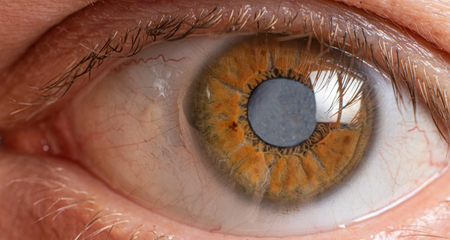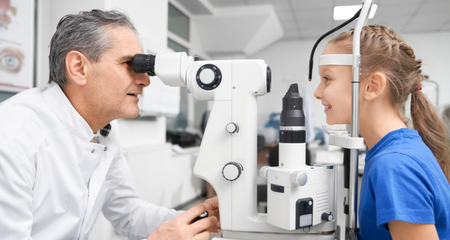Congenital Cataracts: An Overview
The diseases that are acquired by birth are called congenital diseases. Cataracts present in the baby by birth are called congenital cataracts. In this condition, the lens of the eyes, which is supposed to be transparent for clear vision, is clouded. Hence the baby has sight problems by birth.

Here are some key points about congenital cataracts:
- Babies with congenital cataracts have clouded lenses, causing vision issues.
- The congenital cataract can occur in one or both eyes.
- Early diagnosis and treatment of congenital cataracts are essential to avoiding other eyesight issues in the child.
- Surgery can correct or at least improve vision issues due to congenital cataracts.
Since congenital cataracts are uncommon, and many parents are unaware of this condition, congenital cataracts remain unnoticed until a significant vision issue develops. Therefore it is very important to learn the symptoms of congenital cataracts.
Symptoms of Congenital Cataracts
Some common symptoms include:
- Cloudy vision

- Blurry vision
- Decreased vision

- Double vision

- Lights that appear too bright

- Faded appearance of colors.
Sometimes symptoms are not clearly manifested. Then, the experts look for the following symptoms in children.
- Reduced or no eye contact
- Grey or white-colored pupil
- Unusual or fast eye movements
- The red glow of pupil in photos
Types of Congenital Cataracts
Congenital cataracts are of two types:
- Syndromic– These congenital cataracts occur with other birth defects or health conditions such as down syndrome, heart defects, deformity in facial features, hearing or vision problems.
- Non-syndromic– This occurs when the baby is born only with this condition, i.e., congenital cataracts.
What causes Congenital Cataracts?
Congenital cataracts occur due to hereditary or environmental factors. However, the research is still ongoing to determine what causes them. Here are some conditions that may cause congenital cataracts.
-
- Chromosomal mutations in genes– Some babies have these congenital disabilities (birth defects) due to sudden genetic mutations or changes in their chromosomes while in their mother’s womb. Genes are important coding of the body’s cells that store instructions as your body grows, works, and further passes in progeny.
- Injury in pregnancy– A pregnant woman who goes through any type of physical trauma like an accident, fall, or physical violence has a chance of giving birth to babies with congenital defects. Babies born with congenital cataracts are examples of it.
- Diabetes– If the mother has diabetes, the condition could affect the fetus, causing congenital cataracts.
- Infections– Parents who contract infections like chickenpox, cytomegalovirus, genital herpes, measles, polio, and rubella either in gestation or before pregnancy can have a baby with congenital cataracts
- Unknown factors– In some cases, the cause of congenital cataracts is unidentified, and no significant clues are found in the diagnosis that may have caused congenital cataracts.
Diagnosis
Most pediatrics can recognize this condition in babies shortly after birth. However, they will refer it to an ophthalmologist or eye specialist for further diagnosis and treatment.
The ophthalmologist will conduct a thorough eye examination by
- Slit Lamp Test

- Ocular pressure test

- Testing vision changes (amblyopia or binocular vision issues).
The doctor may also indicate a blood test, X-ray, or computed tomography test to recognize other significant clues of this disorder.
Treatment of Congenital Cataracts
Most children with congenital cataracts needs surgery for rectification. However, there are other treatments also. Let’s see
- Surgery– During surgery, the surgeon will make a small cut in your baby’s eye to remove and replace the lens with an intraocular lens. This special plastic lens is put into a baby’s eye during surgery. It functions like the original lens.
- Contact lenses– If parents want to defer their child’s surgery until a certain age and the cataract progression is very low, they are recommended to wear special contact lenses. These lens help baby to see clearly.
- Patch therapy– It is recommended to treat amblyopia (lazy eye), which the baby has developed due to cataracts. This is to be done after the surgery, which removes cataracts. The patch therapy aims to stimulate and work the weaker eye and gain vision clarity.
Clear Vision is one of the most renowned eye clinics in Mumbai. With state-of-art facilities, expert ophthalmologists, and eye surgeons, we are serving as one of the best eye specialists in India. Congenital cataracts can malign your child’s vision. Visit us for a detailed eye examination and one-on-one consultation with our eye experts.
hdlicensed.com hdlicense.com yellowcrack.com plug-torrent.com




